ABSTRACT
THE CONTENT OF THE ABSTRACT
- Introduction
- 1. Theme urgency
- 2. Tasks of the research
- 3. Goal of the research
- 4. The choice of control method
- 5. The structure of the sludge index control system
- Conclusions
- References
Introduction
Today's pace of development of industry and agriculture need large volumes of water year by year. Obviously water pollution is increasing simultaneously with the increase of consumption in industry and agriculture, because the waste water is the main source of water pollution.
Donetsk region is concentrated one-fifth of the industrial potential of the state. There are about 1.5 thousand large industrial enterprises, 70% of manufactured products are sold in foreign markets. More than 82% of the sales volume in the industrial production accounted for an environmentally hazardous industries: iron and steel (48%) and mining (12%) industry, electricity (10%), chemical, petrochemical and coke-chemical industry (13%) [1, 2].
Biological method is the most effective and economical way for wastewater treatment. Mineralization occurs due to biological processes. Bacteria have the ability of activated sludge process the dissolved substances contained in household wastewater. This method is suitable for waters of different origin of its pollution. Under natural conditions, domestic waste water are applied to fields for irrigation. Bacteria from the soil recycle them there. The biological method is also used in stand-alone stations, sewage treatment plant. Such stations are much safer and more economical than other treatment plants. The effectiveness of biological treatment plants up to 98%. Water output is compared to the quality of process water and can be used for appropriate purposes.
Aeration tank and biologically active materials (activated sludge) working is the base of the method of biological aerobic treatment.
Activated sludge – the community of bacteria and protozoa. They live in colonies in the form of flakes suspended in the water. Microorganisms absorb and oxidize organic matter in the presence of oxygen. Activated sludge is separated from the treated water and recycled wastewater contaminated after processing portions of these materials, where the absorption process (purification) will continue.
Aeration tank – tank (usually rectangular) with activated sludge and air spray device. The air mixes the incoming waste water for saturate it with oxygen [3, 4].
1. Theme urgency
Currently the wastewater treatment plants in our country are ineffective because of the wear and tear of equipment, insufficient level of automation, staff development, lack of data for decision making. This is because the number of parameters is difficult to be determined due to lack of appropriate measurement tools.
Tough operating conditions in the imperfection of the process conditions lead to the systematic violations of process conditions. Attempts to improve the performance of existing structures by modifying the intake system of wastewater, increasing the flow rate of air supplied additional installation of aerators are often technically difficult to be feasible and lead to low results. So the best way out is to use automated systems for monitoring and predicting conditions of the aeration tank in order to improve their work.
2. Tasks of the research
Automation of the biochemical processes of wastewater treatment is developed in two directions:
- Quality control of incoming water (the nature of pollution, the presence of surfactants, pH, presence of toxins);
- Monitoring of purification process (temperature, nutrient availability, content of dissolved oxygen in the mixture of silt, sludge index, etc.) [5].
The population of bacteria in the sludge is (90-95)%. Their functional state, activity and adaptability to environmental conditions determine the stability and aeration efficiency of the biochemical oxidation of pollutants present in wastewater. Environmental conditions in the aeration tanks are provided with a set of many factors. They are determined by the design of the facilities, conditions of operation and composition of treated sewage.
A set of quality parameters of treated wastewater is registered in the operation of sewage treatment plants. This is due to the need for comprehensive monitoring of all processes affecting the physiological state of the activated sludge organisms, and therefore - the result of treatment. The complex condition parameters of activated sludge can be used in prediction systems to identify the causes, adversely affecting the biomass of activated sludge.
Thus problem of technological process control is relevant, especially in increasing the intensity of use of biological methods of wastewater treatment, and operational monitoring of the state of sludge will predict the state of aeration of the biological environment, and as a consequence, the extent and quality of cleaning up polluted waters. Therefore, an important task is to develop an electronic system controls the parameters of activated sludge in the aeration tank.
- Design and rationale of the structure of an electronic system of control sludge index, because the mode of operation of facilities primarily affects the formation of the activated sludge floc and sediment at the deterioration of sludge sedimentation characteristics it is poorly separated from the purified water and washed out to the secondary clarifiers;
- Modeling the electronic control system of the sludge index.
4. The choice of control method
The task of providing high quality purification is reduced to maintain a satisfactory physiological condition of activated sludge and its enzymatic activity. Temperature, nutrient availability, content of dissolved oxygen in the sludge mixture, the pH, the presence of toxins are the most important factors influencing the development and viability of the activated sludge [3].
Sludge index provides information on the flocculation and sludge precipitability. By definition, the index of sludge — the reciprocal of the concentration of sludge in the sludge phase after a half-hour defense of (1):
| I = V0.5 / d, | (1) |
V0.5 — dose of sludge by volume, sm3/dm3; d — dose of sludge by weight, г/дм3 [3].
Fig. 1 shows the precipitability of activated sludge in the sedimentation of satisfactory performance and high quality treatment.
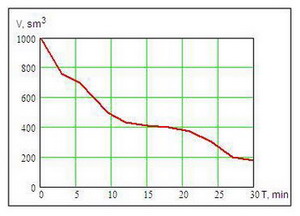
Fig. 1 — Precipitability of activated sludge sedimentation characteristics with satisfactory
Necessary maintaining the stability index of sludge to ensure satisfactory living conditions for sludge treatment and satisfactory operation of facilities. Most existing methods are based on laboratory analysis. The introduction of express control physical-chemical conditions in real-time forecasting on the basis of the results obtained by methods of mathematical modeling of aeration tank can significantly improve their results.
An optical method slightly inferior to the analytical methods of analysis of turbid media. It is based on measuring the intensity of light absorbed by them. Advantages of the method are its extreme sensitivity and speed [6].
In the electronic control system of the sludge index used the converter, which realizes an optical method for the analysis of turbid media, namely, the photoconversion of the scattered light from particles of sludge.
5. The structure of the sludge index control system
The proposed electronic monitoring sludge index system consists of measuring parts, conversion and control microprocessor system. The structure of the control system of the sludge index is shown in Fig. 2.
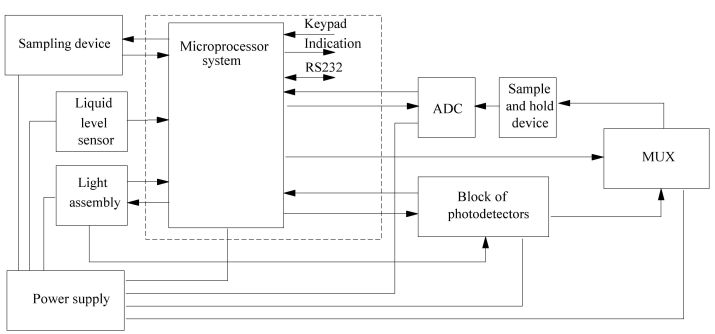
Fig. 2 — The structure of the control system of the sludge index
The basic operation principle of the electronic system is determining the turbidity of the entire length of the test vessel with sludge from the change of intensity of light scattered at any angle.
The measuring part is a unit of illumination, power detectors and sedimentation tank (Fig. 3). Photovoltaics based on the photodiodes 3 located along the entire length of the sedimentation tank. Light emitter 2 situated at the top of the vessel. 4 — hole for sampling. A liquid level sensor is triggered when completing the required probe size.
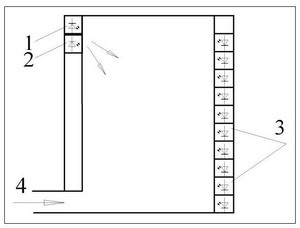
Fig. 3 — The design of the measuring device
The probe is illuminated by LED.
Probe to stand for 30 minutes after filling the sedimentation tank. Every 3 minutes photodetectors measure the illumination along the length of the sedimentation tank [7].
Analog multiplexer switches photodetector's output to the input of unit sample-and-hold, and then to the ADC. After 30 minutes of, light emitter is turned off, the microcontroller calculates the dose of sludge volume and sludge index and builds sedimentation characteristics on the display.
The algorithm of the system shown in Fig. 4.

Algorithm of the functioning of the sludge index control system
(animation: 7 shots, 5 cycles of repeat, 136 KB)
The principle of operation of the device of the measuring system using the scattered light is shown in Fig. 5.

Fig. 5 — The principle of measurement of the device using scattered light
L — light source (light emitting diode); О1, О2 — first and second lenses; Pr — probe; Е — receiver (photodiode)
Е receiver (photodiode) is a breakdown on the optical axis of the instrument, which measures the attenuation of light, caused by light scattering, determines the turbidity of the probe [8].
Activated sludge is a dispersed system with multiple dispersed phases. The shares are exposed to molecules of the medium. System is a continuous dynamic. The settling of sludge is uniform and smooth. In this case the scattered light in the lower layers is much smaller than in the upper. The nature of the deposition time and height C(h,t) take exponentially.
In Fig. 7 is shown family of characteristics of the concentration of activated sludge in a sedimentation tank, from time to time and the height from the bottom. It is obtained by modeling the relevant characteristics of the system in MathCad. The concentration at t=0 С=2 mg/l, h16>h15>..>h0.
Analytically, the dependence of concentration on time is of the form (2) for the upper layers, and (3) for the lower:
|
C(t,a) = Cм · e-t·a,
C(t,a) = Cм – Cм · e-t·a, |
(2) (3) |
Cm — concentration throughout the volume of sludge sedimentation tank; a — factor which takes into account the absorption coefficient and the height from the bottom of the tank, a=f(k,h) — a linear function.
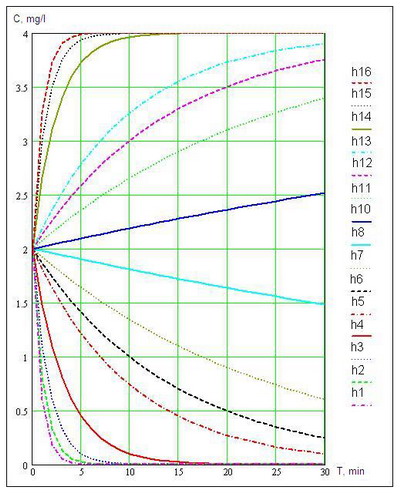
Fig. 7 — Dependence of the concentration of activated sludge from time and the tanks's height
The structure of the sediment is inhomogeneous along the length of the vessel. Illumination over the entire length of the vessel described by a set of equations at each measured level of the tank
The volume of sediment (4) is determined by the level of illumination of the photodiodes E1≥E2≥...Em>>Em+1≥Em+2≥..≥En, where E1 — photodiode at the top of the sedimentation tank, En — photodiode at the bottom of the sedimentation tank, Em>>Em+1 — boundary of the sediment and clarified water;
| V = m · l · π · d2, | (4) |
l — the distance between the photodiodes, m – number of photodiodes that have registered the presence of sediment, d — diameter of the sedimantation tank.
The principle of operation of measuring devices of the system based on measuring the scattered light is a photodiode, which is included to photoconverter. The output voltage of i photoconverter:
| Uph out i = f(Eph in i(C)), | (5) |
Eph in i=Ei — light on the i-level measurements, the dependence on the concentration of sludge.
Photovoltaics light into a voltage by an operational amplifier and the photodiode is shown in Fig. 8.
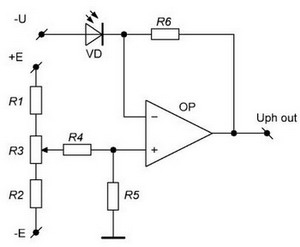
Fig. 8 — Diagram photoconverter on operational amplifier
The converter's output voltage
| Uph out(С) = Iph(С)·10-6 + E · R5 / (R5 + R4), | (6) |
Iph(С) — dependence of the photocurrent on the sludge concentration; R6 — the feedback resistor; E — bias voltage; R4, R5 — voltage divider [9, 10, 11].
In Fig. 9 the family of the photocurrent photodiode characteristics from the sludge concentration at t=0, 2.5 .. 15 min. a) the maximum height from the bottom of the vessel, b) in the middle of the tank. Photodiode current changes in the small range (1.0-1.8 nA) when the concentration of sludge along the length of the vessel, and hence the index of sludge in the range from 0 to 2 mg/l. Output voltage converter for these concentrations varied from 4.7 to 4.8 V. Threshold sensitivity is 0.01 mg/l, taking into account the intrinsic noise of the converter at the input of the order of 0.01 mV and a conversion coefficient of the amplifier (about 108 A/B).
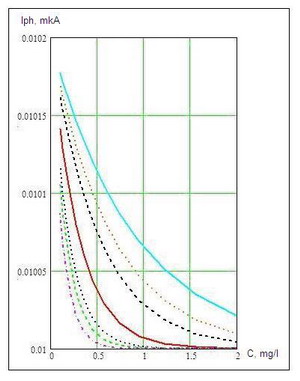
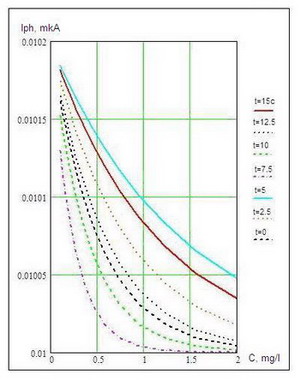
Fig. 9 — The family of the photocurrent photodiode characteristics from the sludge concentration at t = 0, 2.5 .. 15 min.
a) the maximum height from the bottom of the tank, b) in the middle of the tank
The dependence of the photoconverter output voltage of the sludge concentration shown in Fig. 9 for t from 0 to 15 min. increments of 2.5 min. in the upper layers of the probe.
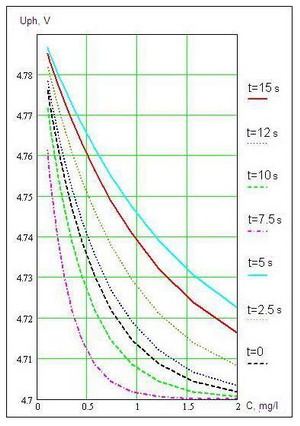
Fig. 10 — Dependence of the output voltage of the concentration of sludge
Conclusions
In the work carried out:
- Argued the necessity of operative tracking of activated sludge in the aeration tanks as the main medium, affecting the quality of wastewater treatment.
- Using the optical method allows the development of an electronic control system of the sedimentation properties of the sludge, which makes it possible to efficiently obtain data on the change of sludge index.
- There is proposed the structure of the electronic sludge index control system of optical method based on the microprocessor system.
- Threshold level and range of the concentration of sludge were determined. They are, respectively, 0.01 mg/l from 0 to 2 mg/l.
- Modeling circuits of the primary converter carried out. The dependence of the concentration of activated sludge from the settling time and distance from the bottom of the vessel, depending on the output parameters of the converter on the concentration of silt and the deposition time are constructed.
| This master's work is not completed yet. Final completion: December 2012. The full text of the work and materials on the topic can be obtained from the author or scientific adviser after this date |
References
-
Доклад о состоянии окружающей среды в Донецкой области. Под ред. С.Третьякова, Г.Аверина. — Донецк: 2007 г. — 116 с.
- Мухин В.В. Гигиеническая оценка микробного загрязнения и обеззараживания сточных шахтных вод Донецкой области / В.В.Мухин, Г.В.Бакун, А.Д.Амирбеков // Актуальные проблемы транспортной
медицины. — 2008. — № 4 (14). — с. 65 — 71. Жмур Н.С. Технологические и биохимические процессы очистки сточных вод на сооружениях саэротенками. — М.: АКВАРОС, 2003 г. — 512с. - Яковлев С.В. Водоотведение и очистка сточных вод / С.В.Яковлев, Я.А.Карелин, Ю.М.Ласков,
В.И.Калицун. — М.: Стройиздат 1996, с. 588 — 594. Федюн Р.В. Принципы построения динамической модели процесса биохимической водоочистки / Р.В.Федюн, В.О.Попов, Т.В.Найденова. Наукові праці ДонНТУ. Серія «Обчислювальна техніка та автоматизація». — 2010 — Вип. 18 (169). — С. 172 — 179. Булатов М.И. Практическое руководство по фотометрическим методам анализа / Булатов М.И., Калинкин И.П. Практическое руководство по фотометрическим методам анализа. — 5е изд., перераб. — Л.: Химия, 1986. — 432 с. Измерения в промышленности: Справ. изд. в 3-х кн. Кн. 3. Способы измерения и аппаратура: Пер. снем. / Под ред. П.Профоса. — 2е изд., перераб. и доп. — М.: Металлургия, 1990. — 344 с. Продукция корпорации HACH-Lange. — http://www.hach.ru/. Аксененко М.Д. Микроэлектронные фотоприемные устройства / М.Д.Аксененко, М.Л.Бараночников, О.В.Смолин. — М.: Энергоатомиздат, 1984. — 208 с., ил. - Хламов М.Г. Методичні вказівки до виконання курсової роботи з дисципліни “Електронні системи”. — Донецьк: ДонНТУ, 2006.
- Ишанин Г.Г. Источники и приемники излучения / Г.Г.Ишанин, Н.К.Мальцева, В.Л.Мусяков. Источники и приемники излучения: Пособие по решению задач. — СПб.: СПбГУ ИТМО, 2006. — 85 с.
- Игнатов А.Н. Оптоэлектронные приборы и устройства: Учеб. пособие. — М.: Эко-Трендз, 2006. — 272 с: ил.
